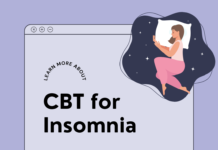What is nicotine dependence and what are some of the treatments for smoking cessation?
Nicotine is a substance that can be highly addictive. For a person to be considered to have nicotine dependence, the user must display at least three of the following criteria occurring at the same time during a 12-month period:
- Tolerance—Signs of tolerance are a need for more nicotine to get the same effect or diminished effect from the same amounts of nicotine.
- Withdrawal, as manifested by either the characteristic nicotine withdrawal syndrome, or nicotine (or a closely related substance) is taken to relieve or avoid withdrawal symptoms.
- Nicotine is used in larger amounts or over a longer period than intended.
- The user has a persistent desire or makes unsuccessful attempts to cut down on tobacco.
- A great deal of time is spent in obtaining or using the substance (e.g., chain smoking).
- Important social, occupational, or recreational activities are reduced because of tobacco use.
- Use of the substance continues despite recurrent physical or psychological problems caused or exacerbated by tobacco—for example, continuing to smoke despite diagnoses such as hypertension, heart disease, cancer, bronchitis, and chronic obstructive lung disease.
What are the treatments for smoking cessation?
There are several treatment options for smoking cessation. Use of pharmacological agents or nicotine gum or patches, can be helpful for some individuals who are trying to quit smoking.
Cognitive behavioral therapy (CBT) has shown to be an effective treatment option for those individuals who would like increased intervention. Using CBT, the therapist can help the client prepare to quit, then through regular self-monitoring and behavioral modifications, stop smoking, and then maintain progress over time.
What could help me prepare to quit?
- Set a quit date. Commitment to a date may help you stick to your goal and anticipate change.
- List pros/cons around quitting. Develop reasons for wanting to stop smoking most likely will help clarify your goals.
- Having realistic expectations and knowing quitting isn’t easy, and it also is possible. Withdrawal symptoms and cravings may be difficult to manage at times; be mindful that cravings can last about 3-10 minutes before they pass. Knowing that if you quit “cold turkey,” days 3 to 5 after quitting may be the peak of your withdrawal symptoms. This could be a challenging time for relapse.
- Enlisting the support of others. Letting supportive people know you are trying to quit smoking may help to reinforce your decision. Supportive others can help to support through irritability and cravings.
What will help once I’ve quit?
- Get rid of reserves. Throw away any extra packs of cigarettes or nicotine.
- Minimize behavioral cues and make it inconvenient to smoke. For example, don’t keep packs of cigarettes where they are within easy reach, avoid buying cartons of cigarettes, and stop carrying cigarettes with you.
- Try to keep your mouth and hands busy without cigarettes. Chewing gum or having a stress ball to keep your hands busy may help to distract from the urge to have a cigarette.
- Develop alternative stress management techniques to avoid a relapse. Deep breathing, mindfulness, and meditation can all be effective in managing stress without smoking. Be mindful that all require practice.
- Notice any health benefits. Be mindful of increased sense of smell and taste, easier breathing, better breath and less discoloration of your teeth. Remind yourself of the health benefits of quitting.
- Don’t give up. Quitting smoking is not an easy task! Relapse and cravings may happen, and it often takes 4-6 attempts at quitting before one is able to completely stop.
[/column]

